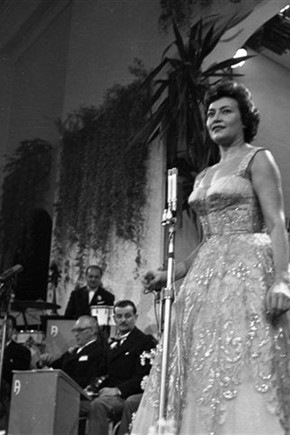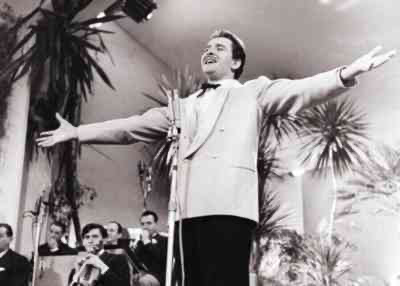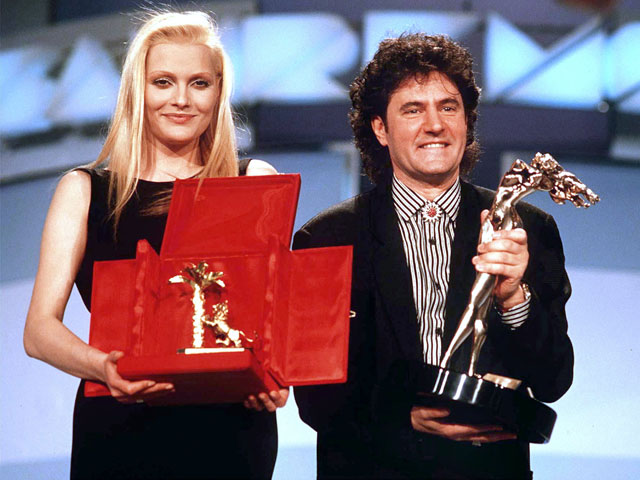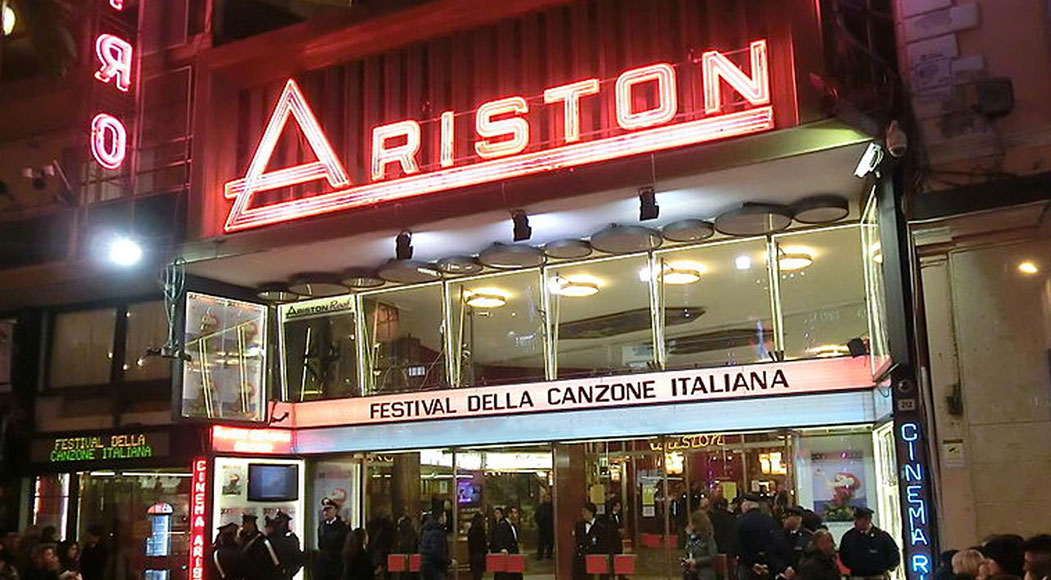Followed by millions every year, criticized by many, seriously despised by just a few. Over the past 70 years, for a week every year, the Italian music festival of Sanremo has catalyzed attention on the otherwise quiet Ligurian town of the same name.
Ongoing denunciation, the advent of talent shows, and a global pandemic haven’t even been able to arrest it. Sanremo is unquestionably THE event in Italian pop culture, and, like many other similar manifestations, the song competition was born under the not-so-artistically-inclined premise of capitalism.
It was January 1951, and the PR agency of Sanremo’s Casino organized a contest to liven up the Ligurian Riviera’s off-season, an attempt to revamp the economy (and the town’s reputation) post WWII. The event was broadcast by the Italian national radio and saw just three contestants performing 20 songs. The winner of that year was Nilla Pizzi with “Grazie dei Fior”, a melancholic rumba that foreshadowed the singer’s future success. In fact, she was so successful that the following year Pizzi went back to win first, second, and third place–a still unbeatable record.
From 1955, every edition of the contest was broadcast live on national TV, and, today, it’s the longest-running annual national TV music competition in the world (also making it one of the longest-running television programs globally). Unlike other competitions of the same caliber, the Festival di Sanremo is exclusive to new songs and, since 1956, has been used to select the country’s contender in the Eurovision Song Contest. (…Which Italy has won three times: in 2021 with Måneskin, in 1990 with Toto Cutugno, and in 1964 with Gigliola Cinquetti.)

Perhaps Sanremo’s most remarkable achievement, however, was the introduction of a new musical style that developed in stark contrast to the excessive sentimentalism and insularity typical of Italian music from the previous decades. It was time for a happier genre, a musica leggera (light music), made of everyday language and catchy tunes. Winner of the 1958 edition of Sanremo, Domenico Modugno’s “Nel blu dipinto di blu”, aka “Volare”, became the perfect embodiment of the new style, and a symbol of Italianess tout court (and Domenico Modugno went on to win the first ever Grammys for both Record of the Year and Song of the Year).
Today, at least three generations of Italians have memories of their Sanremo. Mine come from the end of the 1980s and the 1990s, the “Golden Age” of the Festival, Sanremo’s glory years. Back in those days, nobody was thinking about budget reviews, and the festival invited to its stage international stars like Peter Gabriel (who tried to swing with a rope and land among the audience in his 1983 performance), Queen, Duran Duran, Whitney Houston (who famously gave an encore of “All at Once” in 1987), Elton John and RuPaul, David Bowie, Madonna.
But the keystone of this renaissance wasn’t the glittering stars of abroad, but TV presenter Pippo Baudo, affectionately known as “Superpippo”. He holds the record for number of festivals hosted–13 editions between 1968 and 2008–and that of the most-watched Sanremo ever. A whopping 18,300,000 tuned into his 1987 finale.
In 1984, Baudo wrote a page of history by giving visibility to a group of steelworkers protesting against job cuts, inviting them on Sanremo’s stage–an unprecedented move. And, on February 22nd, 1995, a man climbed over the balustrade of the theater hosting the festival, threatening to throw himself off. In front of 17 million Italians watching the show live on TV, a stoic Baudo leaves the stage, passing through the police and carabinieri who’ve been attempting to coax the man down to no avail. Baudo’s microphone is conveniently switched-on. “I’ll help you!” You can hear Baudo promising. “I give you my word of honor.” He’s convinced, and the two climb back to safety. The crowd claims their hero, singing his name in stadium-chant fashion: “Pippo!” “Pippo!” “Pippo!” It’s the salvific power of TV at its finest.

Domenico Modugno at Sanremo in 1958
As a kid, Sanremo meant I was allowed to stay up late–that time of the year only–to watch it with my parents. It was a proper rite of passage into the world of adults. Those eternal nights in front of the TV, the solemn moment when each song was announced in that particularly old-fashioned way, the thrill of surprise at the outlandish looks of the singers… My real memories get mixed-up with the countless videos from past editions that I’ve found online years later.
To me, however, it’s a festival made by Anna Oxa performing “È tutto un attimo” (1986) in a black sheath dress, hooded, navel out. By Patty Pravo going down the stage’s steps in a Versace lamé dress, with a futuristic-Japanese hairstyle and an oversize fan, while her song “Per una Bambola” (1987) plays in the background; these were the days when singers would lip-sync to their own songs. By Mia Martini singing “Almeno Tu nell’Universo” in 1989, a few years before prematurely passing away. And then by 19-year-old Laura Pausini competing in 1993 with “La Solitudine”, and Giorgia winning the Festival with “Come Saprei” in 1995.

Anna Oxa and Fausto Leali in 1989
As I grew into my teens, I disregarded Sanremo, the festival ending up with all the other expressions of popular culture I generally rejected. It’s only recently that it’s started to interest me again, mainly after talented contemporary singers like Mahmood took part in the competition.
Because, as the famous slogan goes: “Sanremo è Sanremo” (“Sanremo is Sanremo”), and, in the end, it’s impossible to overlook. So while we’re waiting to be entertained by the following edition, remember that Italians fall into two categories: those who watch Sanremo and those who lie.





